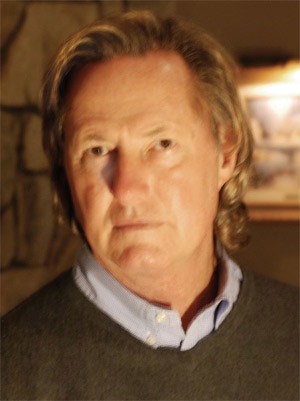
On National Lighthouse Day on Friday, August 7, 2020, the National Lighthouse Museum at Staten Island in New York City will present its Research Award to North Carolina maritime historian Kevin P. Duffus.
The presentation will be featured as part of the museum’s 10th Annual Gala which will be produced in a virtual format via Zoom, Facebook, and Twitter.
Duffus has been researching, writing books, and producing documentaries about North Carolina lighthouses for 40 years. He first visited the National Archives in Washington, D.C. in 1980 to conduct research for a groundbreaking TV documentary shot on 16 mm film that was broadcast on WRAL-TV in Raleigh and other stations across the state. The film, “North Carolina Lighthouses—Romance and Reality,” inspired Gov. Jim Hunt to form the Save Cape Hatteras Lighthouse Committee, which raised funds and advised the National Park Service on ways to protect the endangered lighthouse.
Duffus’s appreciation of the state’s lighthouses began at an early age. In order to visit and climb Cape Hatteras Lighthouse for the first time in 1971 at 17-yrs. old, he rode his bicycle along with two high school friends 450 miles round-trip over five days from Greenville to the Outer Banks.
In 1983, Duffus interviewed 94-year-old Vernon Gaskill, the last living keeper of a North Carolina first-order seacoast lighthouse at Bodie Island. Gaskill shared the incredible stories of how he built his house from shipwreck timbers and also how he saved the life of a fellow keeper by dragging a boat loaded with provisions across six miles of ice in Roanoke Sound in the record winter freeze of 1918.
Duffus’s lifelong fascination with lighthouse history has produced numerous research achievements. He discovered the history of 1870 Cape Hatteras Lighthouse builder Dexter Stetson, whose identity, until then, had long been a mystery.
In 2002, after years of searching, he located and identified the 1853 Cape Hatteras Lighthouse Henry-Lepaute Fresnel lens, considered by historians to have been lost since the Civil War. The whereabouts of that lens was described by Lighthouse Digest magazine as one of the great unsolved mysteries of American lighthouse history. His research and leadership were instrumental in the recovery and reconstruction of that historic American treasure as the premier exhibit at the Graveyard of the Atlantic Museum on the Outer Banks.
In 2010, Duffus discovered why the Cape Hatteras lens was considered the nation’s most important lighthouse apparatus by President Lincoln’s administration—it had been the celebrated centerpiece of the newly formed U.S. Lighthouse Board’s exhibit at the World’s Fair at New York’s Crystal Palace in 1853. The historic lens is today the oldest surviving first-order lens in America.
Four years later, he tracked down the pedestal of the 1853 lens displayed at the Crystal Palace—the oldest American lighthouse pedestal known to exist—at the top of the Pigeon
Point Lighthouse in California.
In 2017, Duffus’s research revealed that the 1903 Cape Fear Lighthouse lens had been displayed at the 1876 Centennial Exhibition at Philadelphia, at the 1899 Trans-Mississippi and International Exposition at Omaha, and at the 1901 Pan-American Exposition at Buffalo, NY.
In 2017, Duffus discovered the previously unknown architectural lineage of North Carolina’s first lighthouse at Cape Fear completed in 1794.
And, after more than five years of research, in 2020 he proved for the first time the true facts which correct longstanding misinterpretations of Charleston’s first lighthouse established in 1768.
His work, and his discoveries continue. This week Duffus has finally named the original builder of North Carolina’s first lighthouse at Cape Fear, an identity that has long remained a mystery.
“Historical research is like assembling a massive jigsaw puzzle,” Duffus said. “The historian does not have the benefit of seeing the puzzle’s completed picture on the cover of the box, and few of the puzzle pieces are even in the box but are scattered far and wide in archives, attics, and in the ancient deed books of county courthouses. Research is a scavenger hunt while riding a roller coaster, with ups and downs, twists and turns, obstacles and triumphs, conundrums and stunning surprises. I find it endlessly exciting and entertaining.”



A great summary of Kevin’s nearly half-century of superlative historical research. writing, productions, each revealing new and exciting morsels of lighthouse—and maritime—history. Congratulations!